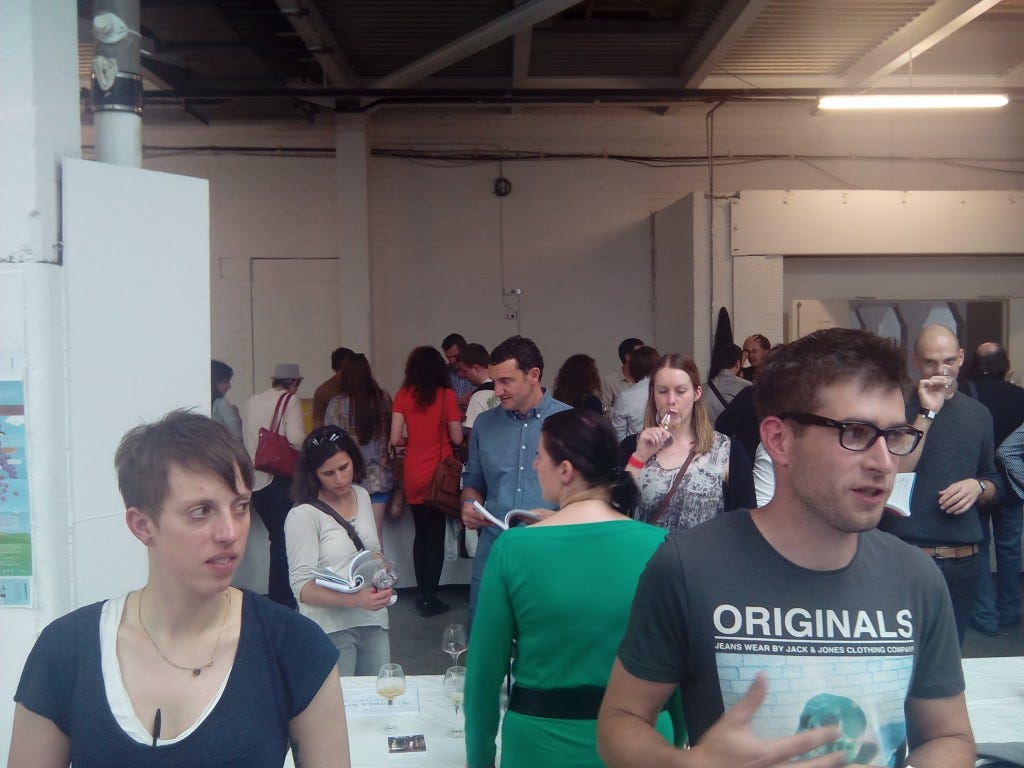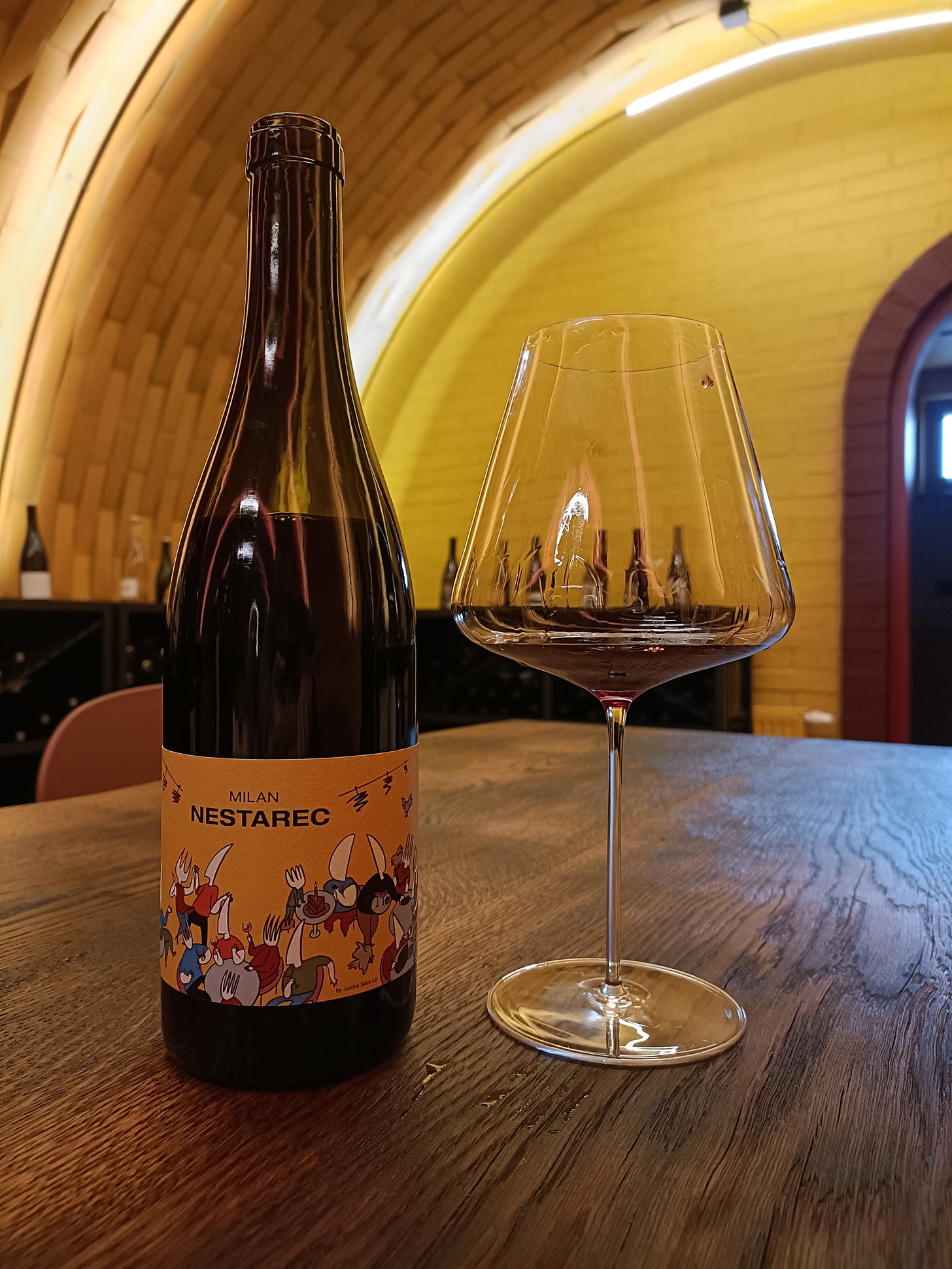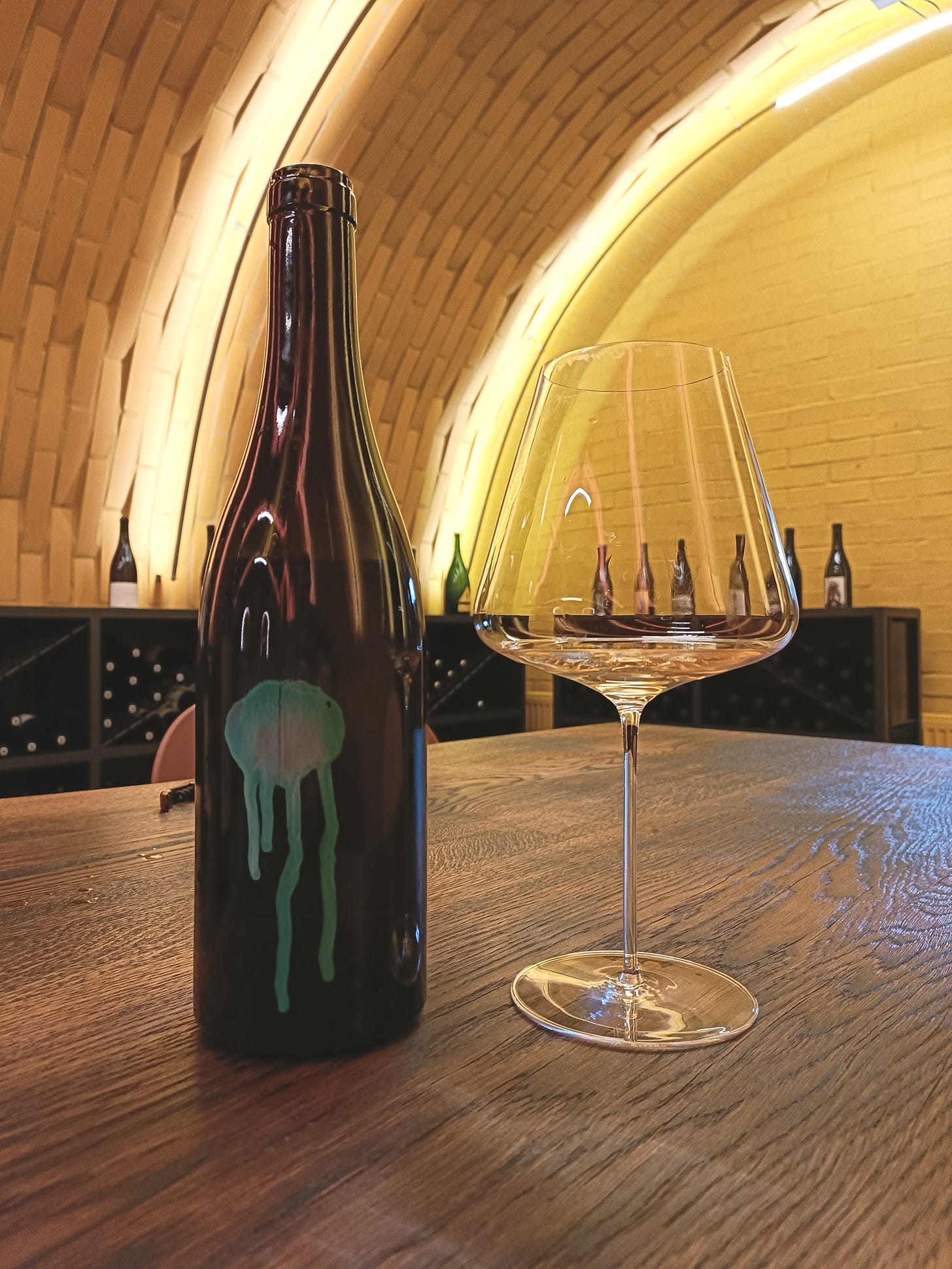The Winemaker's Secret Success Factor
What I learned from Czech natural wine supremo Milan Nestarec
I’ve often pondered about what separates wildly successful winemakers from those who remain in obscurity, or just below the radar. Is it ambition, luck, skill or something more?
Living in Austria for a year in 2013, I got to know countless vignerons on both sides of the coin: some destined to stay forever with the confines of regional or domestic sales and a modest price-band, some who broke through into export and potential superstardom. It was fascinating trying to spot the x-factor.
This is not to deride those who earn their crust supplying a local market. In many ways it’s a more sustainable business than shipping heavy glass bottles around the planet. But it’s a truism within any classic European wine country that growers doing the most inspirational or ground-breaking work usually end up going the export route to find more open-minded customers. Or simply those with deeper pockets.
Czech winemaker Milan Nestarec fits unequivocally into the latter category. I first met him at Raw Fair London in 2015, still in his 20s and communicating via a colleague as his English was almost non-existent. Even then, his name was in the ascendant. That reputation as the poster child of Moravian natural wine just kept building. Nestarec’s winemaking has evolved with it, as I discovered when I finally made it to the ironically named ‘Château Nestarec’ in January 2024.
What, I wondered, was the secret to his success?
Inspiration from afar
If you want a clue, take a look at Nestarec’s Instagram account. It’s littered with posts that are not about him, but instead celebrate his favourite winemakers from other regions and countries. He recently started a series where he interviews colleagues, publishing the results in a monthly newsletter.
Gaining inspiration from peers clearly matters a lot to Milan. Not that there was any shortage of wine culture in his upbringing. He grew up and still lives in Velké Bílovice, one of the most important winemaking towns in southern Moravia. It has just under 4,000 inhabitants and around 700 hectares of vineyard - a figure that’s been much reduced over the years, due to property development.
Milan’s dad planted new vineyards in 2001, after returning home from a career working for a nursery in Pfalz, Germany. At that time the family focused on selling grapes. Milan made his first vintage in 2004, using selected yeasts and all the other additions and corrections he learnt about during his studies1. Then during 2007-08 he went on soul-searching visits to Friuli Collio and Goriška Brda’s alternative winemaking icons: Radikon, Gravner and Movia. The connection to Movia via the late Petr Nejedlík (Dobrá Vinice), who Milan first met in 2005. “I went for a two hour visit and stayed three days, opening every old bottle imaginable” he laughs.
The upshot was Milan’s first big philosophical and stylistic statement in 2009, when he began conversion to organic viticulture and minimal intervention winemaking. This coincided with his first commercial vintage and the year he took over the family’s vineyards. I tasted the tail end of that phase at Raw Fair in 20152. The wines were still sulphured, and there were two more ‘mainstream’ ranges, Muzika and Klasika.
As Milan explains, Nestarec lost more or less all of their customers and started from scratch twice, first after the big shift in 2009, and then again with vintage 2014 when he stopped using sulphites. The wines from this phase became very wild and, in my opinion rather inconsistent. But they resonated with a new generation of natural winelovers from New York to London to Paris, who didn’t care if they were a bit volatile or unstable. Podfuck, Gin+Tonic and the Forks and Knives cuvées brought fame or infamy, depending on one’s personal taste.
Milan was initially delighted at the wines’ newfound popularity. He’d spent years “walking around restaurants in Prague knocking on doors” as he tried to sell his wines. “It was a lot of pressure” he says, “I was the boss at 21 years old.” He also took encouragement from visiting fellow Czech Andréa Calek’s small wine fair in the Ardeche in 2012. “The French growers told me I was making good wine” he says. “It was a shot in the arm.”
But it got to the point where he was shipping entire containers of "Forks & Knives” (three of his cheaper cuvées, a white, rosé and red) to the US, and the focus no longer felt right. “People just wanted this funky style” he explains, but the wines didn’t have the sense of place he wanted. Milan has since reduced the production of Forks & Knives, and reimagined them as what he terms “village wines”, with the blends focused on expressing the area’s loess soils.
The winemaking in general feels more focused and precise than five years ago. Milan has pared it down to the basics. Most wines are now bottled two years after vintage, to ensure stability. The all-or-nothing stance on sulphur has softened, as Milan feels that some cuvées have a better chance of ageing and maturing with minute additions.
New ideas and learnings continue to be a theme. Franz Weninger provided invaluable advice on organic certification, which Nestarec has now achieved across their entire 25 hectares and 40 plots. The most recent planting is four hectares of a true field blend - not row by row, but completely mixed (white varieties only) as it would have been in the past in Moravia.
Ten of those 25 hectares came with the purchase of a bankrupt winery in 2019. The site is about as unromantic as it gets, hence why Milan and his team christened it “the château”. A few ugly prefabs cluster round a large cellar that appears from the outside to be made entirely of corrugated steel panels. It looks more like a deserted industrial estate than an artisanal winery. Yet step inside and a modern and slick looking space reveals itself, with polished concrete floors and a luxurious amount of space filled with multiple format stainless steel tanks and an impressive row of 3,000 litre Stockinger barrels.
Success factors
What does Milan have in common with the high flyers I got to know in Austria? All of them tend to travel, taste widely and remain outward facing. He talks enthusiastically, for example, of his meeting with Nikolas Juretic, the young Friulian winemaker who came to him as a pruning consultant working for Simonit and Sirch, or Markus Altenburger, with whom he swapped learnings about Blaufränkisch - an important variety in Altenburger’s region (Burgenland) and in Moravia (under the name Frankovka Modra). It becomes clear that his interviews are a way of learning and structuring the knowledge gleaned from those he admires.
Open-mindedness is at least as important as ambition, when it comes to success factors. As soon as a grower says something along the lines of “I only drink my own wines, I don’t like anyone else’s” this is a kind of death. Where there is no longer curiosity, there can be no evolution, no process of refinement or continuous improvement.
This isn’t a problem I see Milan suffering from - his entire career has been about not standing still. Of course he’s far from done. “I want to wake up every day, have fun and learn something in the process” he told me, as we strode across the winery’s courtyard. He seems to be doing exactly that, with the considerable upside that it produces delicious wines for the rest of us to enjoy.
Favourites tasted at Nestarec in Jan 2024
Milan must make 50 different wines. We didn’t taste them all, but here is a small selection.
OKR 2022
This might be Milan’s budget orange wine, sold in a one litre bottle, but I loved it. He’s moved further and further away from long skin contact, preferring the way that wines with shorter or no skin contact age. This blend (Grüner Veltliner, Sauvignon Blanc, Chardonnay, Gewürztraminer, Pálava) fermented only three to four days on the skins. But that was clearly enough to intensify the aromatics on the nose and to provide an enjoyable prickle of tannins on the finish. This is the kind of juicy, bright fresh style that I find absolutely moreish.
WTB 2019
Milan’s top Grüner Veltliner (Veltlínské Zelené if you prefer), from a vineyard planted in 1970. Subtitled “loess is more” on the label, there are no tricks here, just the expression of the soil and long lees ageing (no racking) in those lovely Stockinger barrels. It is, as you might expect from those heavier soils, well rounded with an impression of fullness. I loved the creamy texture, the tangy, juicy mandarin flavours and the little suggestion of tannins on the finish (it’s not skin fermented, but did have a cold soak on the skins for 48 hours).
Dopamin
One of several solera-style wines, mainly Grüner with a bit of Chardonnay and Riesling. This first release has wines from 2019 - 2022. Ripe apple with a spicy hint of church incense or pine needles, great citrussy lift and stunningly clean despite no sulphite additions.
Transcendent No.3
A field blend of Pinot Noir, Pinot Blanc (only 10%) and Frankovka. Another solera, currently the third release blending wine from 2019, 2020 and 2021.
Contrarily, the reds here were direct pressed and the Pinot Blanc was skin fermented. It still feels like a red on the nose, with some sour cherry perfume and lovely fruit, but drinks like a fresh and rather delicate rosé.
Forks & Knives 2020
Frankovka, St. Laurent, Pinot Noir. More structure and a bit more noticeable wood than some of the other reds. Refreshing acidity and nutty tannins - very enjoyable.
Jil 2019
Old Frankovka vines, again aged in 3,000 litre Stockinger barrels. Feels deft and light, despite 14% alcohol. Slightly dusty plum and cherry aromas. Lovely structure, proper Frankovka tannins. Could use another year or two to show at its best - still very youthful.
Availability
Nestarec wines are available worldwide. Buy them in the Netherlands from Wilde Wijnen, in the UK from Newcomer Wines, in the US via Jenny and Francois (they’re available in many outlets in NYC and beyond). For other countries, check this page on the Nestarec website.
Further reading
A piece I wrote about the Czech natural winemaking scene back in January
’s detailed profile of Nestarec from April 2023Although his studies were in conventional winemaking, Milan was lucky to have Jaroslav Osička as his teacher.
I tasted the 2013 vintages.












"As soon as a grower says something along the lines of “I only drink my own wines, I don’t like anyone else’s” this is a kind of death. Where there is no longer curiosity, there can be no evolution, no process of refinement or continuous improvement." This is interesting. Do we want the constant search for "improvement" or the certainty that this is as good as it gets? There is an assumption in your statement that those who stick to their own lack insight or inquisitiveness. What I am wondering is do we need to reinvent the wheel? What are we discovering when we find what is old and traditional? That is that, or it just needs a little "improvement". The consensus is for "improvement" but I wonder if indeed that is better or simply justification for getting paid.